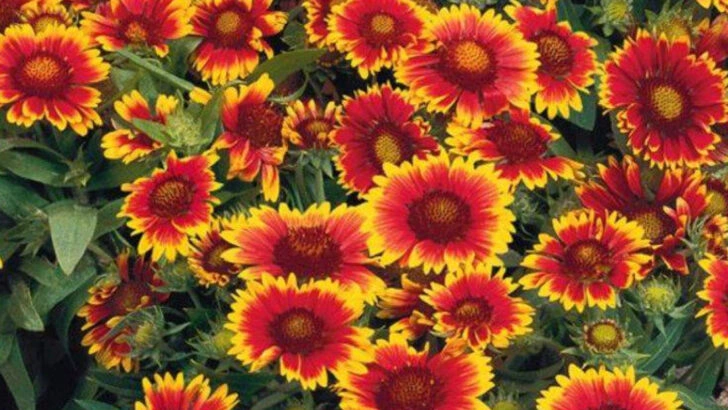Perennial flowers have a special way of making a garden feel alive year after year without demanding too much from you. They pop up season after season, often growing stronger and more vibrant as time goes on. If you’re looking to add some dependable color and charm to your outdoor space, these kinds of flowers are a smart choice.
The best part? Once planted, many perennials require less fuss than annuals but still reward you with beautiful blooms. They create a steady rhythm in your garden, marking the changing seasons with their returns. Let’s take a closer look at some perennial flowers that keep impressing, season after season.
Peony
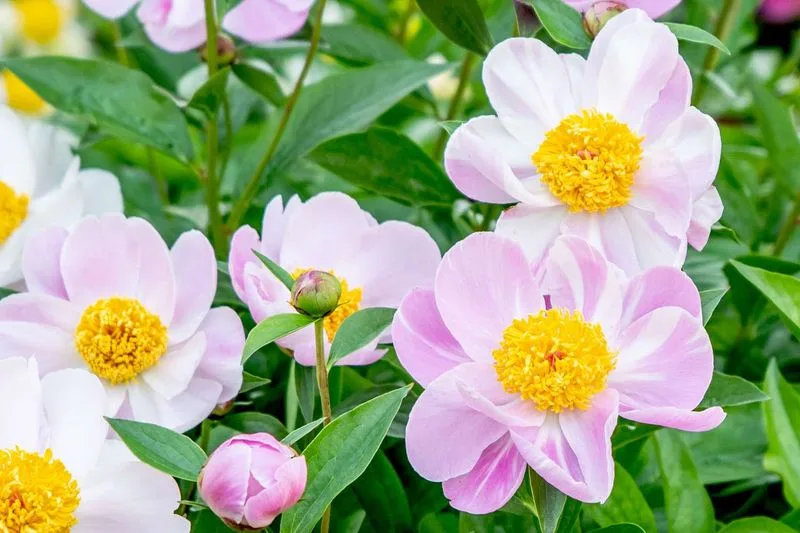
Peonies captivate with their full, lush blooms and rich fragrance. These perennial beauties come in a variety of colors, from soft pinks to deep reds.
Each spring, peonies emerge with vigor, ready to showcase their showy blossoms. They thrive in sunny spots with well-drained soil.
To ensure the best blooms, ample sunlight and space for air circulation are key. Once established, peonies offer garden joy with minimal fuss.
Liatris
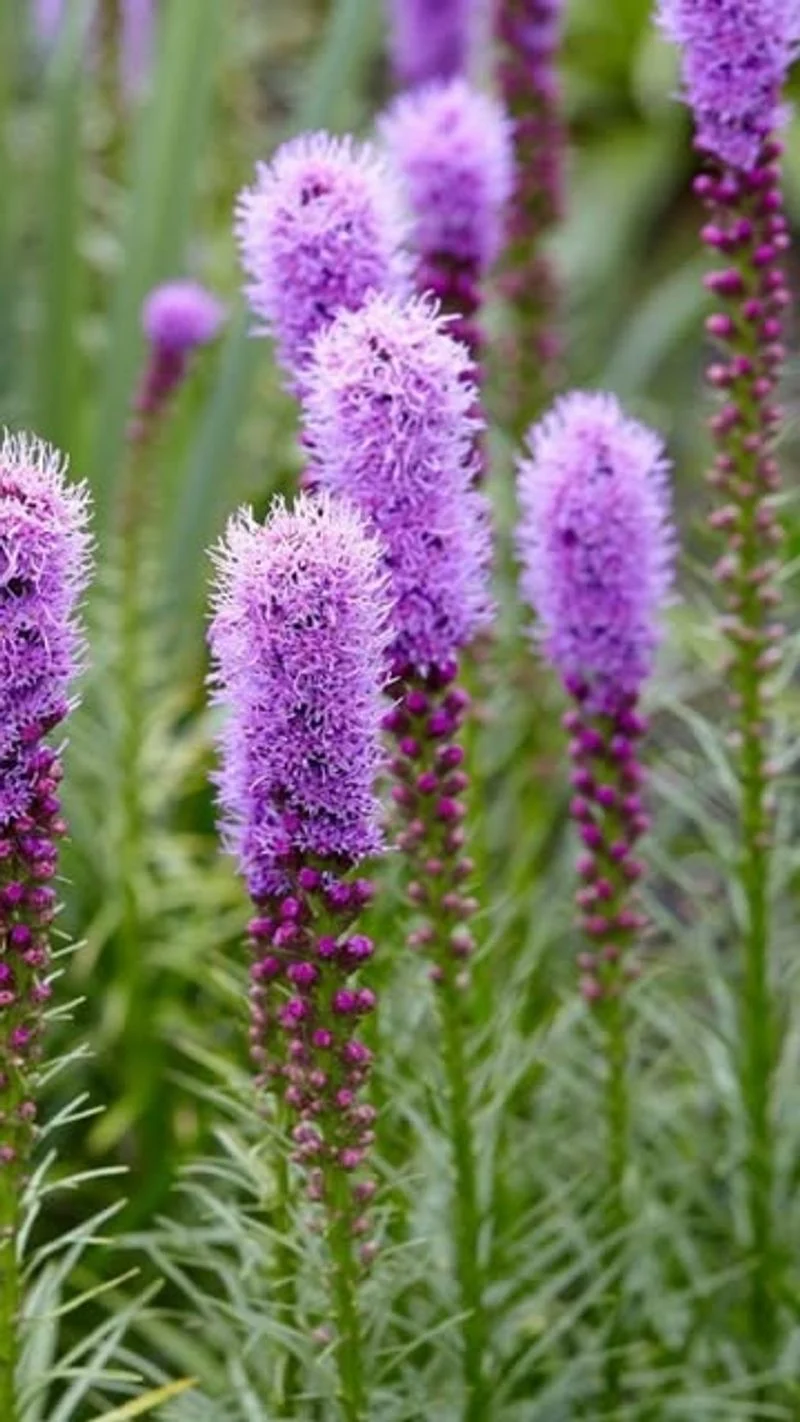
Liatris, or blazing star, stands out in any garden with its tall, spiky purple blooms. These captivating flowers attract pollinators like butterflies and bees, adding life to your garden. Thriving in sunny spots and well-drained soil, Liatris requires minimal maintenance once established.
Its drought tolerance makes it ideal for xeriscaping. This native North American plant not only beautifies landscapes but also supports local wildlife.
A quirky fact: Liatris was historically used by Native Americans for medicinal purposes, showcasing its versatile nature. Plant it once, and enjoy its yearly return without hassle.
Daylily
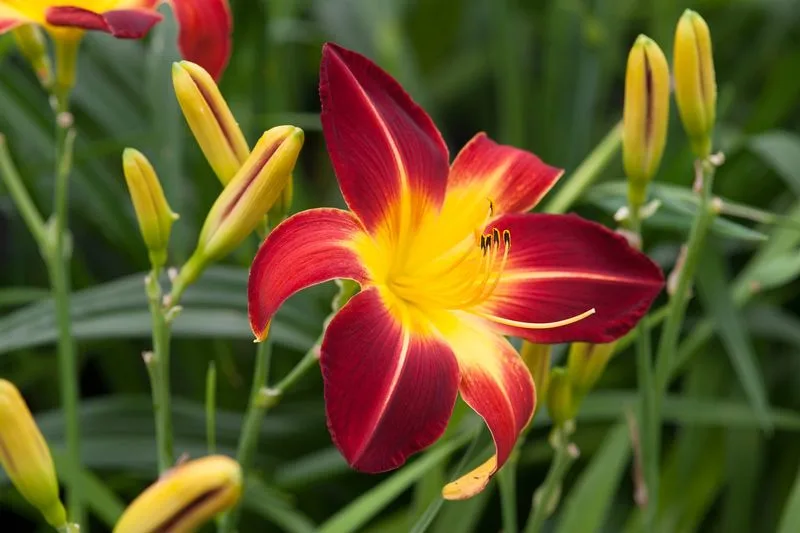
Daylilies offer a burst of color through their unique trumpet-shaped blooms. Though each flower blooms for just a day, their prolific nature ensures a bright display.
These hardy plants adapt well to various soil conditions, making them a favorite for many gardeners. Their foliage remains attractive throughout the growing season.
For optimal blooming, place daylilies in areas with full sun to partial shade. A little care goes a long way in sustaining their vibrant charm.
Coreopsis
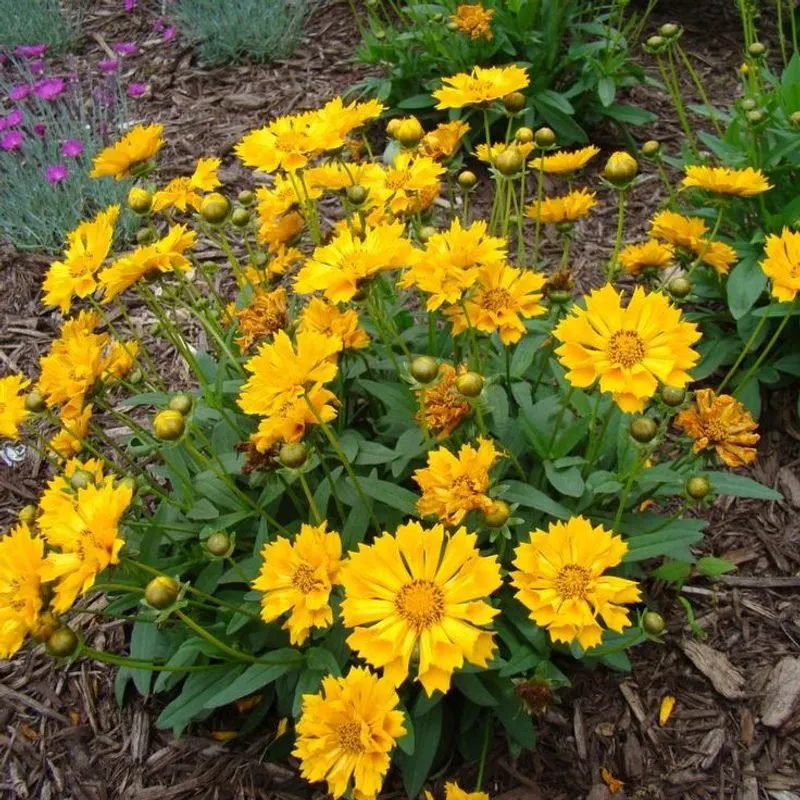
Coreopsis, known for its cheerful yellow blooms, brings sunshine to any garden. These hardy perennials bloom from early summer to autumn, creating a long-lasting floral display. They prefer full sun and well-drained soil, making them easy to care for.
Coreopsis is not only drought-resistant but also attracts butterflies, making it a lovely addition to a wildlife-friendly garden.
Did you know? Coreopsis was chosen as Florida’s state wildflower in 1991 due to its widespread beauty and adaptability. Its vibrant presence will light up your garden year after year.
Hosta
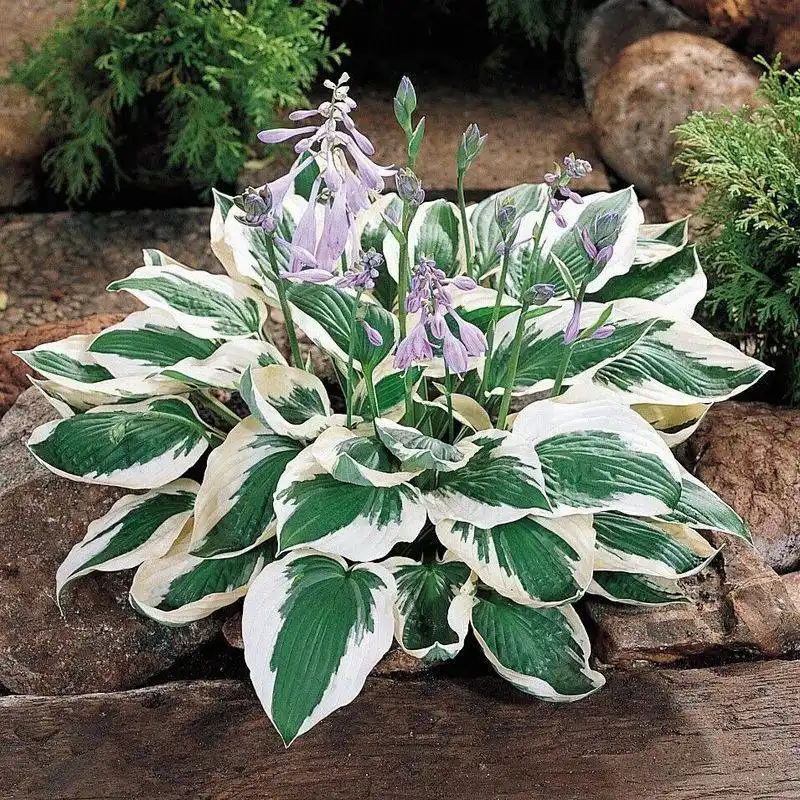
With their striking foliage, hostas are an excellent choice for shaded areas. They offer a lush, tropical feel without the need for bright light.
Hostas come in various sizes and colors, ranging from deep greens to vibrant blue-greens. Their ability to thrive in the shade makes them versatile.
Regular watering and well-drained soil help hostas flourish, maintaining their lush appearance. A reliable perennial, they return every year with ease.
Astilbe
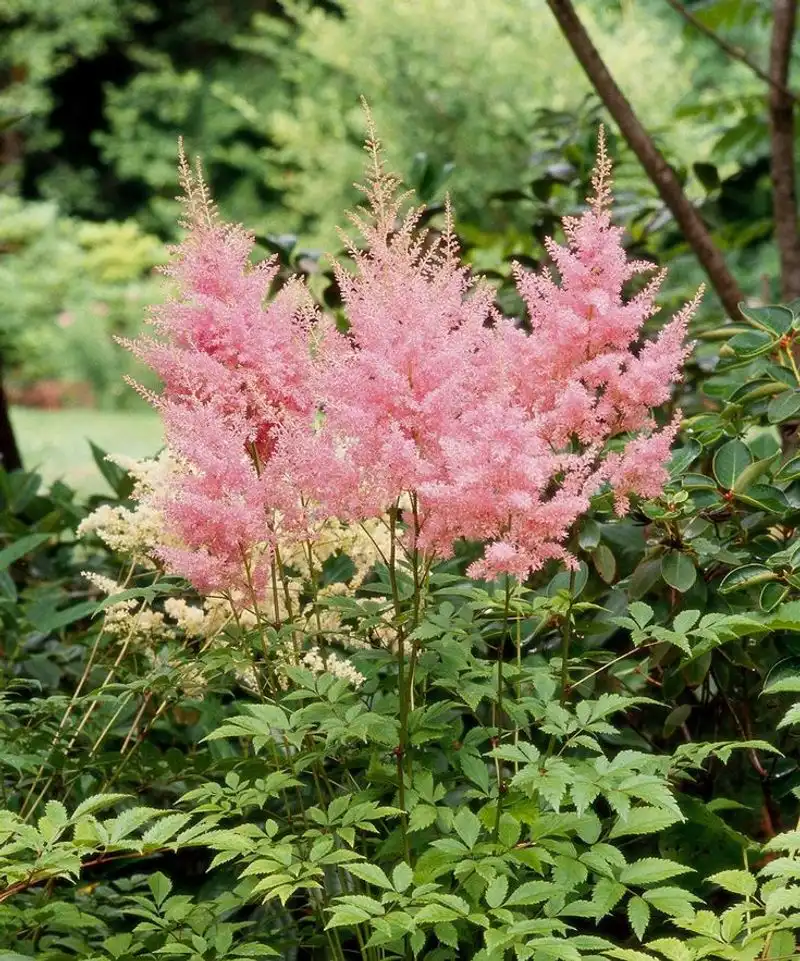
Astilbe, with its elegant plumes of pink and white flowers, adds a touch of grace to shaded garden areas. These perennials thrive in moist, rich soil and prefer partial to full shade, making them perfect for woodland gardens.
Astilbe’s fern-like foliage also provides texture and interest even when not in bloom. Resistant to deer, these plants are a practical choice for rural gardens.
Interesting tidbit: Astilbe was introduced to Europe from Asia in the 1800s and quickly became a favorite for its striking beauty and shade tolerance.
Black-eyed Susan
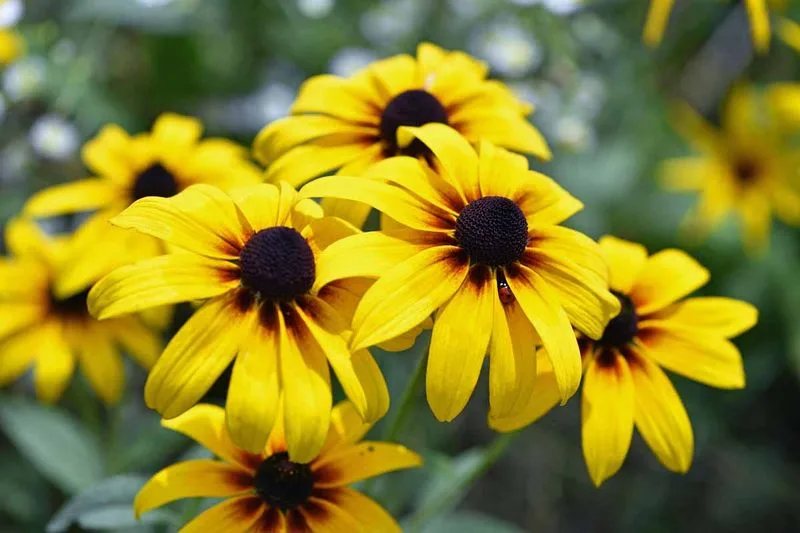
Black-eyed Susans brighten gardens with their cheerful yellow petals surrounding a dark center. They’re a favorite for adding a sunny touch.
These robust flowers are drought-tolerant and easy to grow. They flourish in full sun and well-drained soil, making them a low-maintenance choice.
For continuous blooms, deadheading spent flowers encourages new growth. A symbol of resilience, they stand strong year after year.
Gaillardia
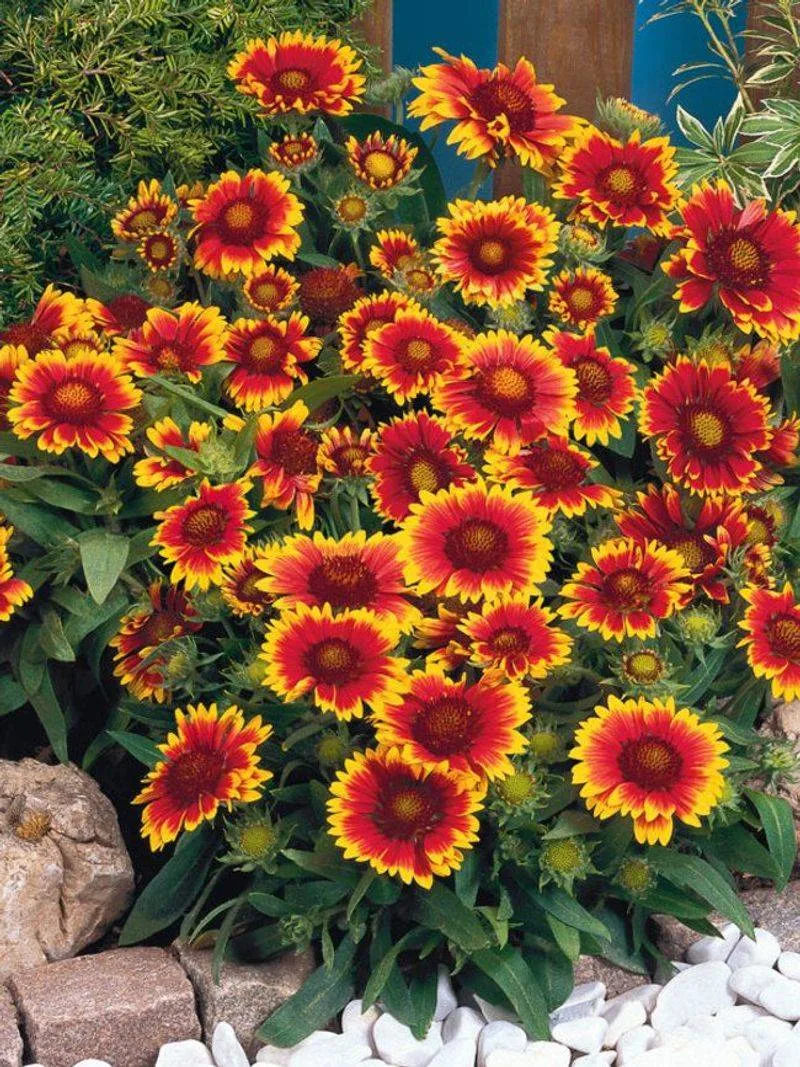
Gaillardia, or blanket flower, boasts fiery red and yellow blooms resembling a desert sunset. These drought-tolerant perennials are perfect for sunny, dry locations. Blooming from early summer to fall, Gaillardia’s striking flowers attract pollinators, adding biodiversity to your garden.
Their low maintenance needs make them a favorite among busy gardeners. Did you know? Gaillardia is named after an 18th-century French magistrate and amateur botanist, M. Gaillard de Charentonneau. Plant these in your garden to enjoy a lively spectacle season after season.
Lavender
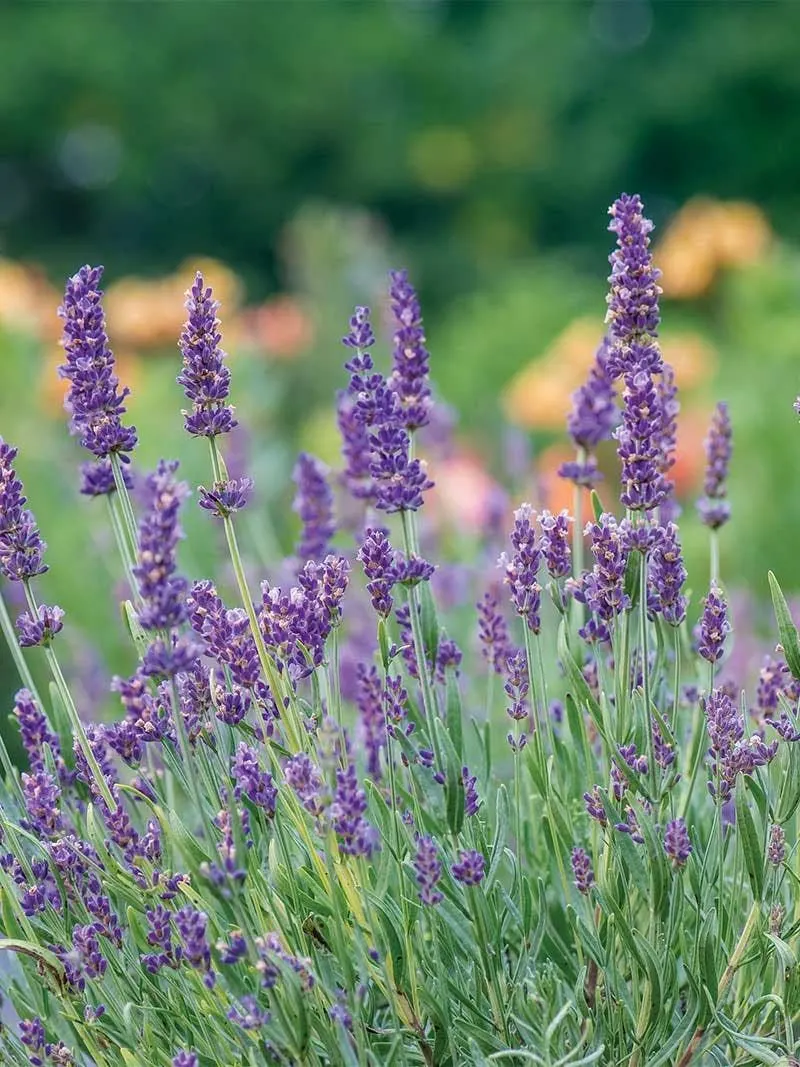
Lavender enchants with its soothing fragrance and vibrant purple blooms. Ideal for sunny, dry spots, it requires minimal care once established.
This aromatic perennial attracts pollinators, adding life to any garden. Its silvery foliage offers visual contrast year-round.
Regular pruning after flowering keeps lavender bushy and promotes new growth. A timeless addition, it exudes calm and beauty.
Heuchera
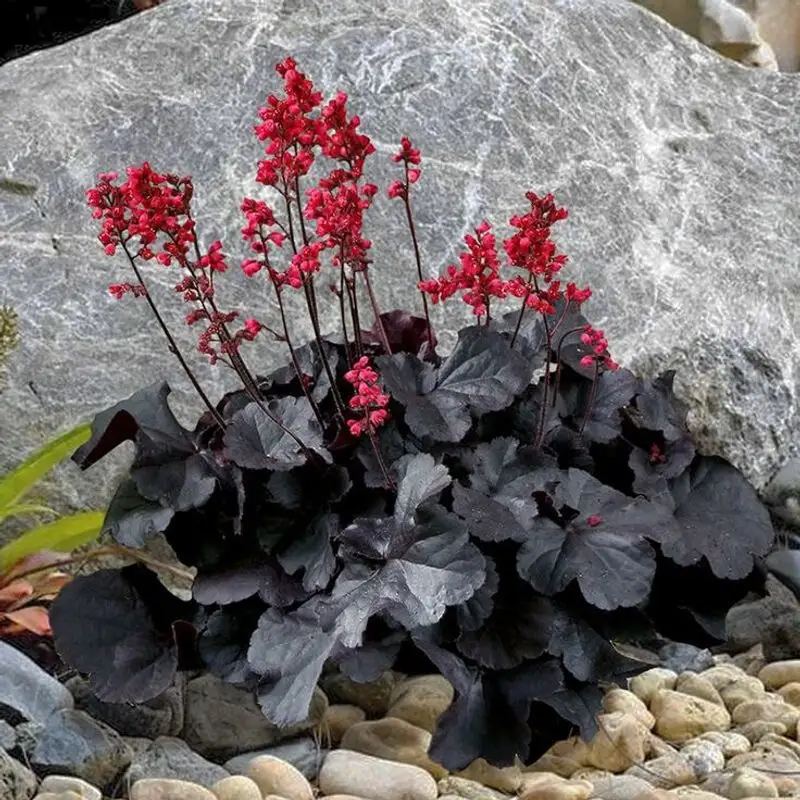
Heuchera, commonly known as coral bells, is beloved for its colorful foliage ranging from deep purple to bright green. This perennial’s delicate bell-shaped flowers add a charming touch, especially in shaded areas.
Heuchera prefers well-drained soil and partial shade, making it versatile for various garden settings. Its evergreen leaves provide year-round interest, even in winter. Fun fact: Heuchera is native to North America and was named in honor of 18th-century German physician Johann Heinrich von Heucher. Add it to your garden for continuous color and texture.
Coneflower
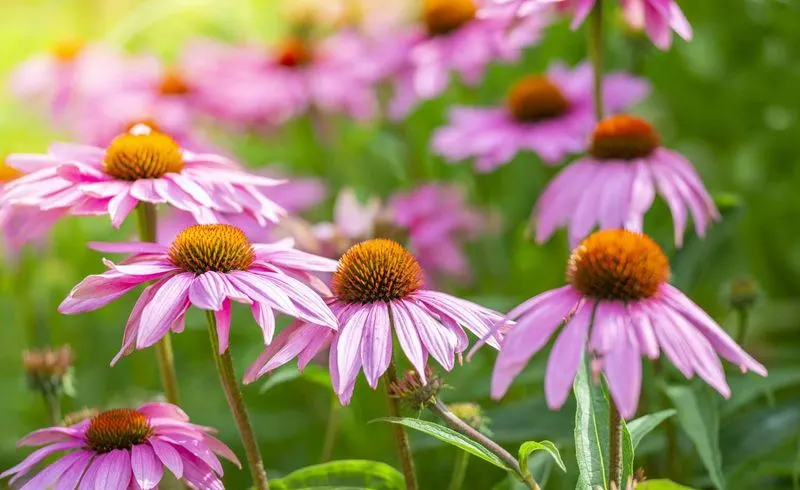
Coneflowers are beloved for their unique shape and resilience. Their daisy-like petals and prominent cones attract bees and butterflies.
These hardy perennials are drought-tolerant and thrive in full sun. They add height and texture to garden landscapes.
Deadheading and occasional division promote vigorous growth and blooming. Coneflowers promise vibrant displays without much effort.
Bleeding Heart
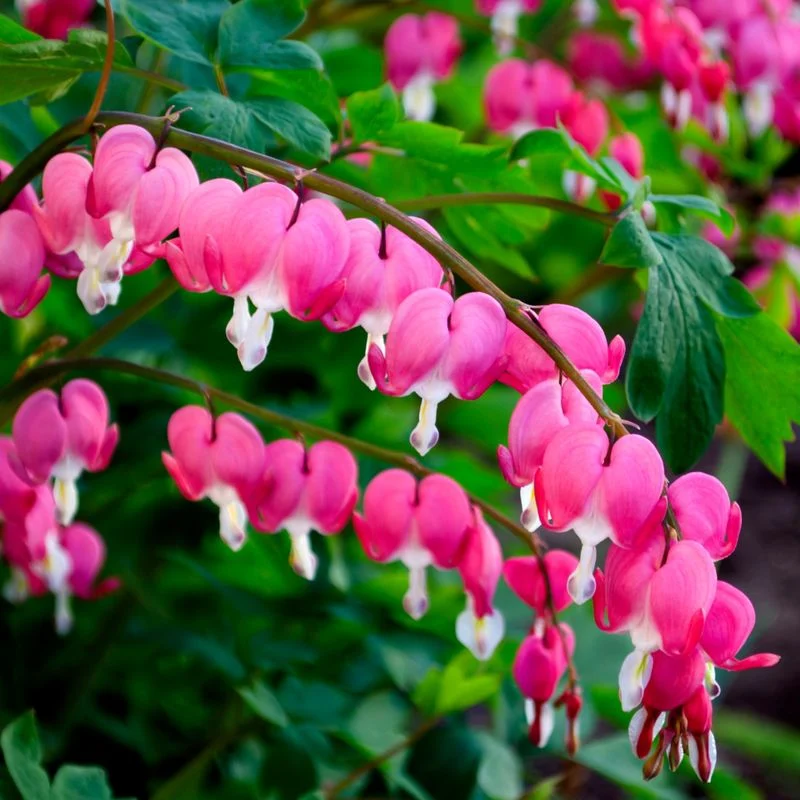
Bleeding hearts delight with their arching stems laden with heart-shaped flowers. They bring a touch of whimsy to shaded areas.
These perennials thrive in cool, moist environments and prefer partial shade. Their delicate appearance belies their hardiness.
Incorporating bleeding hearts into a shade garden adds elegance. With proper care, they return each spring to enchant anew.
Salvia
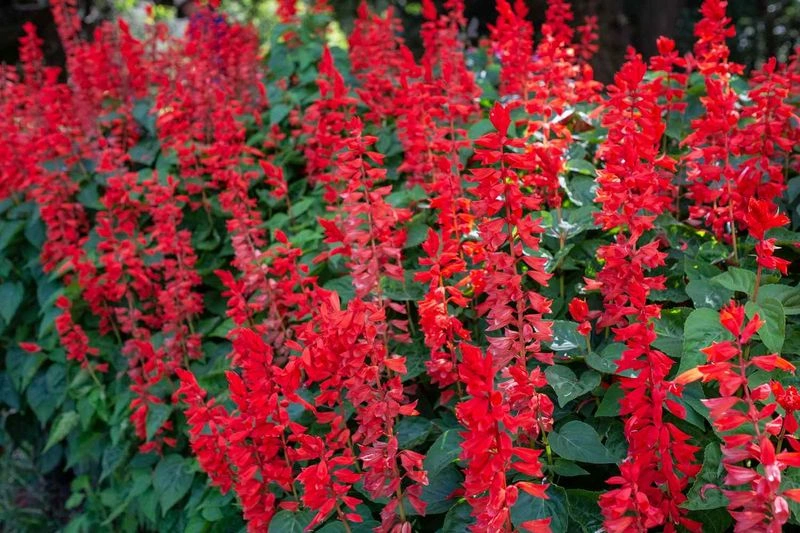
Salvia stands out with its slender spikes of vivid blue, purple, or red flowers. It’s a magnet for hummingbirds and bees.
These versatile perennials thrive in sunny spots with well-drained soil. They add vertical interest to any flower bed.
Cutting back after flowering can encourage a second bloom. Salvia’s bold colors and easy care make it a garden staple.
Sedum
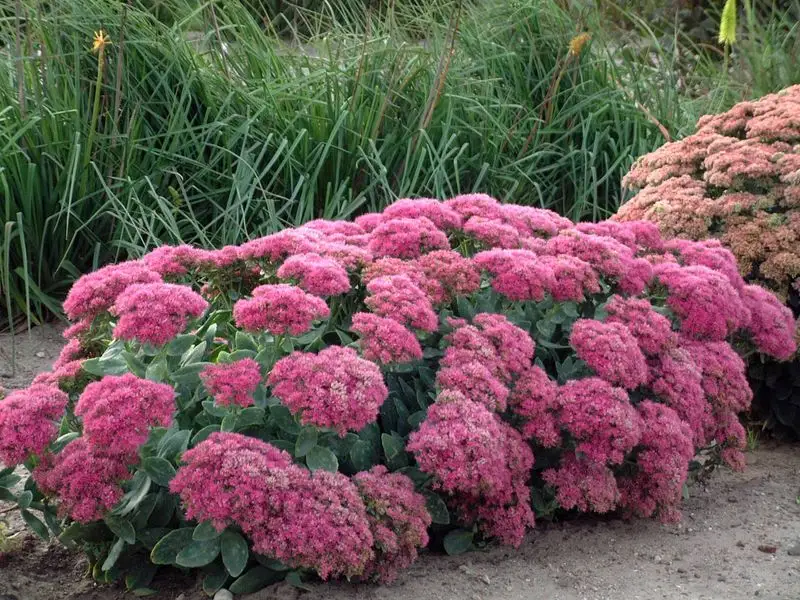
Sedums are tough, water-wise perennials with succulent leaves and clusters of star-shaped flowers. They excel in rock gardens and containers.
Their fleshy foliage stores water, making them drought-tolerant. Sedums come in various colors and sizes for diverse applications.
For a splash of color and texture with minimal upkeep, sedums are a top choice. They bring resilience and beauty year-round.
Lupine
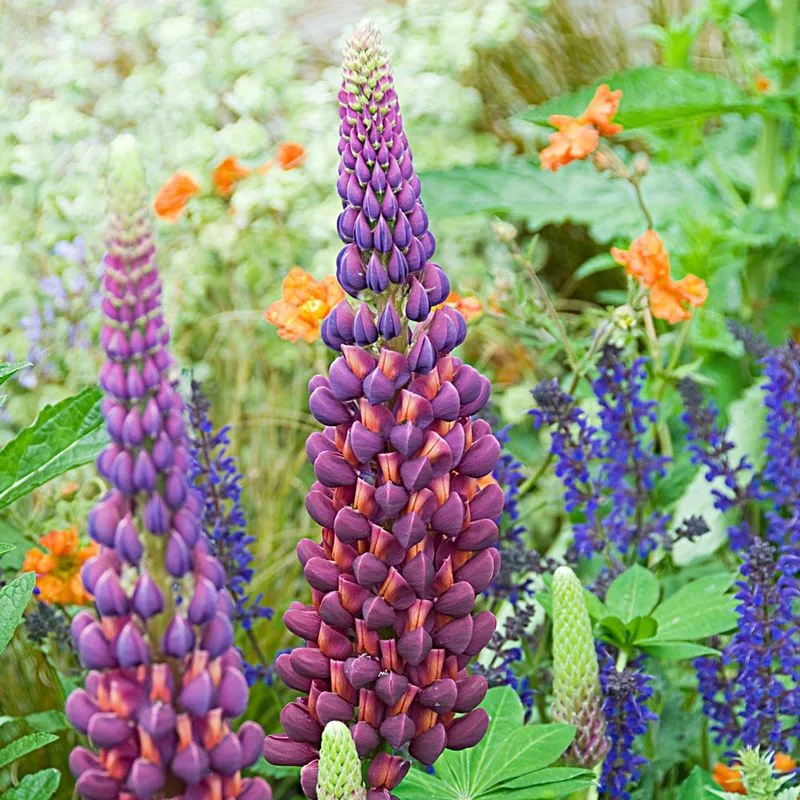
Lupines captivate with their tall spikes of vibrant flowers. They’re ideal for adding height and drama to garden designs.
These perennials prefer full sun and well-drained soil, thriving in diverse conditions. Their bold blooms attract pollinators galore.
For best results, plant lupines in groups. With minimal care, they return each season, enriching gardens with color and vigor.

